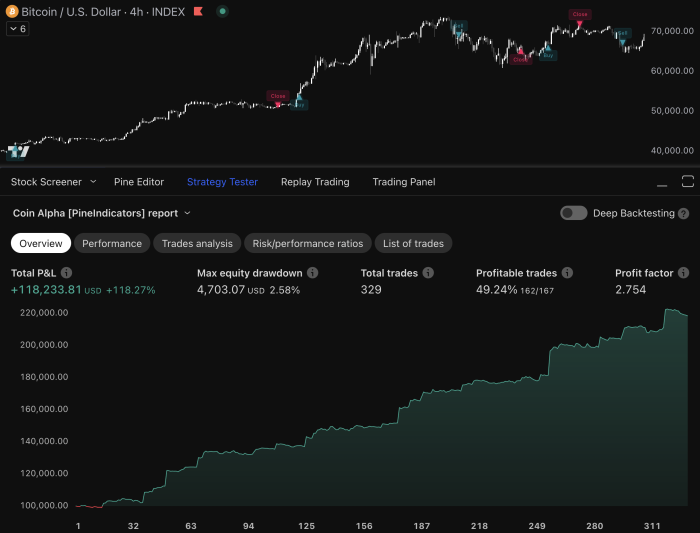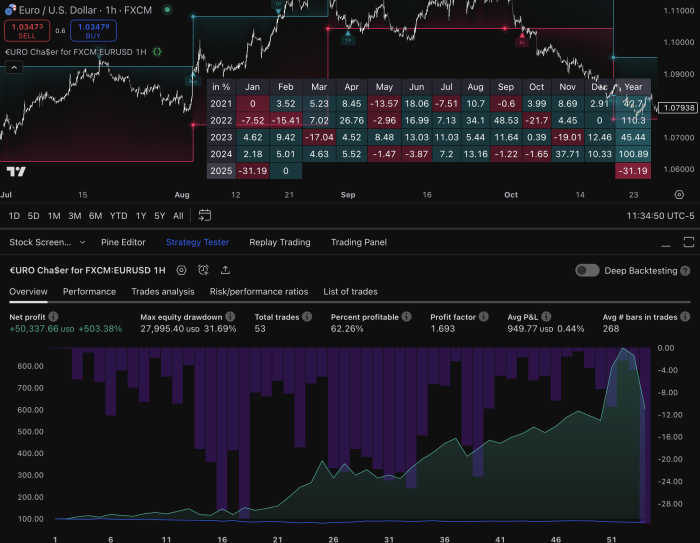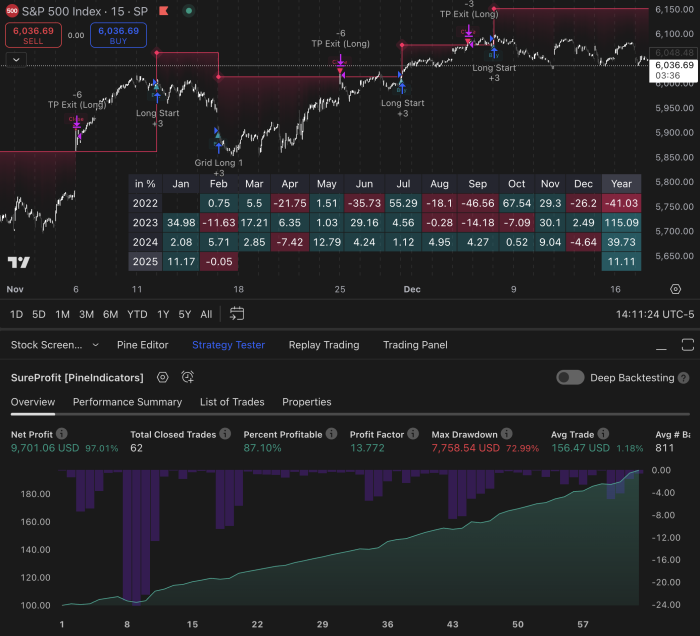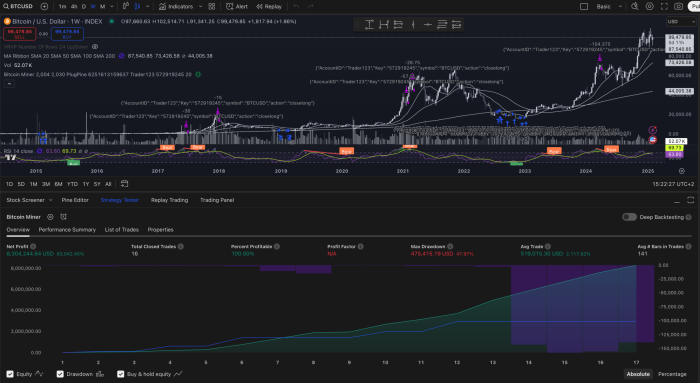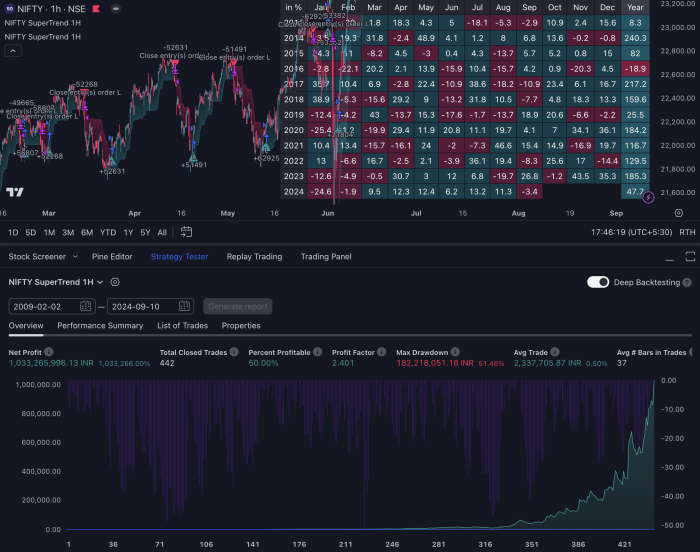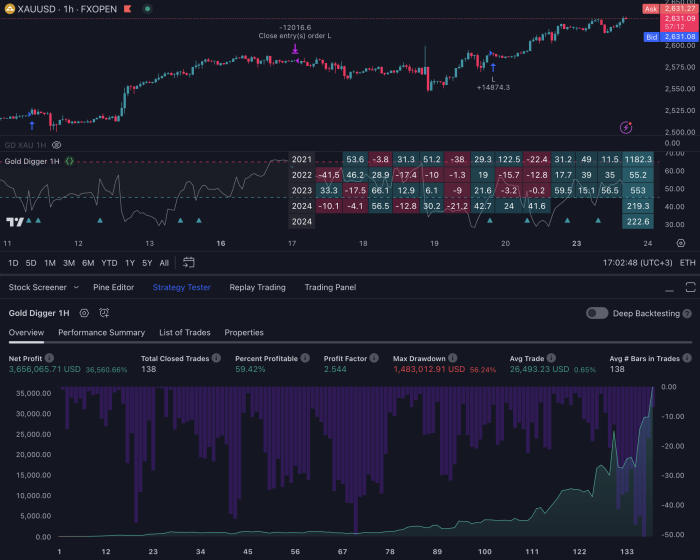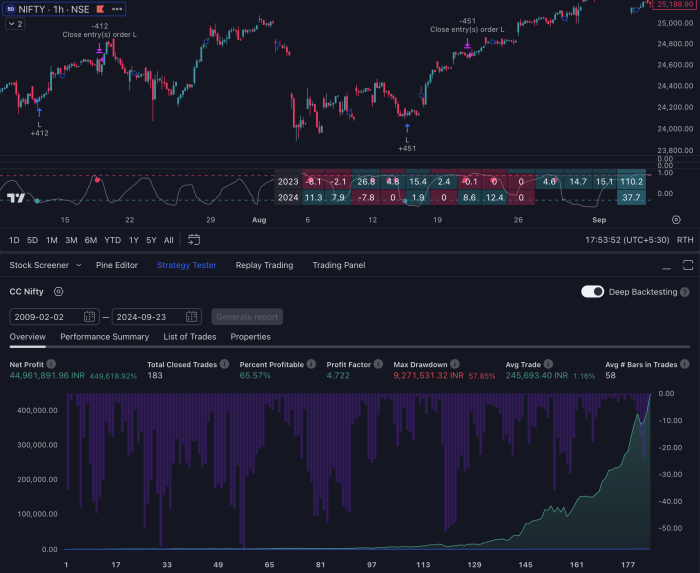TradingView signals are alerts or notifications generated by the TradingView platform, which is a widely used charting and social networking tool for traders and investors. These signals are derived from various technical indicators, price movements, and market trends, providing users with actionable insights to make informed trading decisions. The platform allows users to create custom scripts and indicators using Pine Script, enabling them to tailor signals to their specific trading strategies.
This flexibility makes TradingView a powerful tool for both novice and experienced traders alike. The signals can be based on a variety of factors, including moving averages, relative strength index (RSI), Fibonacci retracements, and other technical analysis tools. When certain conditions are met—such as a stock price crossing a moving average or an RSI reaching overbought or oversold levels—TradingView can generate a signal that alerts the trader to potential buying or selling opportunities.
These signals can be visualized on charts, sent via email, or pushed as notifications to mobile devices, ensuring that traders stay informed in real-time.
Key Takeaways
- TradingView signals are indicators or alerts generated by the TradingView platform to help traders make informed decisions about buying or selling assets.
- Using TradingView signals can help traders save time, reduce emotional trading, and improve their overall trading performance.
- Traders can find discounted TradingView signals by taking advantage of promotions, using referral codes, or subscribing to premium plans with signal discounts.
- There are different types of TradingView signals, including trend-following signals, momentum signals, and volatility signals, each providing unique insights into market movements.
- To use TradingView signals effectively, traders should combine them with other technical analysis tools, set clear entry and exit points, and manage risk effectively.
The benefits of using TradingView signals for trading
Real-Time Notifications for Informed Trading
In the fast-paced world of trading, missing a critical market movement can lead to significant financial losses. TradingView signals help mitigate this risk by providing real-time notifications when specific market conditions arise. This immediacy allows traders to act quickly, capitalizing on opportunities that may otherwise be overlooked.
Improving Trading Skills through Analysis
Additionally, TradingView signals can serve as a valuable educational tool for traders looking to improve their skills. By analyzing the signals generated by the platform, traders can gain insights into market behavior and learn how different indicators interact with one another. This understanding can lead to more refined trading strategies over time.
Fostering Collaboration and Knowledge Sharing
Furthermore, the community aspect of TradingView allows users to share their own signals and strategies, fostering collaboration and knowledge sharing among traders from diverse backgrounds.
How to find discounted TradingView signals

Finding discounted TradingView signals often involves exploring various subscription options and promotional offers available on the platform. TradingView offers several tiers of service, including free and paid plans. While the free version provides access to basic features, subscribing to a paid plan can unlock advanced functionalities, including premium indicators and more comprehensive signal generation capabilities. Traders should regularly check for promotional discounts or seasonal offers that may reduce the cost of these subscriptions. Another effective way to find discounted TradingView signals is by participating in community forums and social media groups dedicated to trading.
Many experienced traders share their insights and may offer trial periods or discounts for their proprietary signal services. Engaging with these communities not only provides access to potential discounts but also allows traders to learn from others’ experiences and strategies. Additionally, some third-party websites may offer reviews or comparisons of different signal services, helping traders make informed decisions about where to invest their resources.
The relevant word to link is “TradingView”. Here is the link to the official TradingView website: TradingView
Understanding the different types of TradingView signals
| Signal Type | Description | Pros | Cons |
|---|---|---|---|
| Buy Signal | Indicates a potential opportunity to buy an asset | Can lead to profitable trades | May result in false signals |
| Sell Signal | Indicates a potential opportunity to sell an asset | Can help avoid losses | May miss out on potential gains |
| Strong Buy Signal | Indicates a strong potential for buying an asset | Higher probability of profitable trades | Can still result in losses |
| Strong Sell Signal | Indicates a strong potential for selling an asset | Higher probability of avoiding losses | May miss out on potential reversals |
TradingView signals can be categorized into several types based on the underlying indicators and strategies used to generate them. One common type is trend-based signals, which focus on identifying the direction of price movement over time. These signals often utilize moving averages or trend lines to determine whether an asset is in an uptrend or downtrend, providing traders with insights into potential entry and exit points.
Another category includes momentum-based signals, which assess the strength of price movements. Indicators such as the RSI or MACD (Moving Average Convergence Divergence) are frequently employed in this context. These signals help traders identify overbought or oversold conditions, suggesting potential reversals or continuations in price trends.
Additionally, breakout signals are crucial for traders looking to capitalize on significant price movements that occur when an asset breaks through established support or resistance levels. Understanding these different types of signals allows traders to tailor their strategies according to their risk tolerance and market outlook.
Tips for using TradingView signals effectively
To maximize the effectiveness of TradingView signals, traders should first ensure they have a clear trading plan in place. This plan should outline specific goals, risk management strategies, and criteria for entering and exiting trades. By having a structured approach, traders can better evaluate the relevance of the signals they receive and make more informed decisions.
Moreover, it is essential for traders to combine TradingView signals with their own analysis rather than relying solely on automated alerts.
While these signals can provide valuable insights, they should be viewed as one component of a broader trading strategy. Incorporating fundamental analysis, market news, and personal experience can enhance decision-making and lead to more successful trades.
Additionally, traders should regularly review their performance and adjust their strategies based on what works best for them over time.
How to interpret and act on TradingView signals

Interpreting TradingView signals requires a solid understanding of the underlying indicators and market conditions that generate them. For instance, if a signal indicates that an asset is overbought according to the RSI, traders should consider whether this aligns with other technical indicators or fundamental news affecting that asset. It’s crucial to analyze the context surrounding each signal; a single alert should not dictate a trading decision without further investigation.
Once a trader has interpreted a signal, acting on it involves executing trades based on predefined criteria established in their trading plan. This may include setting stop-loss orders to manage risk or taking partial profits at certain price levels. Traders should also remain vigilant after acting on a signal; market conditions can change rapidly, necessitating adjustments to positions as new information becomes available.
Continuous monitoring and adaptability are key components of successful trading.
Common mistakes to avoid when using TradingView signals
One common mistake traders make when using TradingView signals is over-reliance on automated alerts without conducting personal analysis. While these signals can provide valuable insights, they should not replace critical thinking and due diligence. Traders who act impulsively based solely on alerts may find themselves making poor decisions that lead to losses.
Another frequent pitfall is neglecting proper risk management practices. Even when following TradingView signals, it’s essential for traders to set appropriate stop-loss levels and position sizes based on their risk tolerance. Failing to do so can result in significant losses if trades do not go as anticipated.
Additionally, traders should avoid chasing after every signal without considering their overall strategy; this scattergun approach can lead to inconsistent results and increased transaction costs.
The future of TradingView signals and their impact on trading
The future of TradingView signals appears promising as technology continues to evolve within the trading landscape. With advancements in artificial intelligence and machine learning, we can expect more sophisticated signal generation methods that analyze vast amounts of data in real-time. These developments could lead to more accurate predictions and enhanced trading strategies tailored to individual preferences.
Moreover, as the trading community grows and diversifies, the sharing of ideas and strategies will likely become even more collaborative through platforms like TradingView. This communal approach could foster innovation in signal generation techniques and lead to the development of new indicators that better reflect market dynamics. As more traders adopt these tools, the overall impact on trading could be profound, potentially leveling the playing field between retail investors and institutional players by providing access to advanced analytical tools previously reserved for professional traders.
If you are interested in learning more about TradingView scripts for beginners, automated Pine Script strategies, and the secrets of long-term trading success, you may want to check out the article on automated Pine Script strategies. This article delves into how to use Pine Script to create automated trading strategies on TradingView, providing valuable insights for traders looking to optimize their trading signals and improve their overall performance.
FAQs
What are Discount TradingView signals?
Discount TradingView signals are trading signals that are offered at a discounted price compared to regular or premium trading signals. These signals are generated using technical analysis and are intended to help traders make informed decisions about buying or selling financial instruments such as stocks, forex, or cryptocurrencies.
How do Discount TradingView signals work?
Discount TradingView signals work by analyzing market data and identifying potential trading opportunities. Traders can subscribe to these signals and receive notifications when a signal is generated, along with details about the recommended trade such as entry and exit points, stop-loss levels, and take-profit targets.
What are the benefits of using Discount TradingView signals?
The benefits of using Discount TradingView signals include access to professional trading analysis at a lower cost, potential time savings in conducting technical analysis, and the opportunity to learn from experienced traders’ strategies and insights.
Are Discount TradingView signals reliable?
The reliability of Discount TradingView signals can vary depending on the provider and the quality of their analysis. It’s important for traders to research and evaluate the track record and reputation of the signal provider before subscribing to their services.
How can traders find Discount TradingView signals?
Traders can find Discount TradingView signals by searching for signal providers on the TradingView platform or through third-party websites that offer discounted trading signal subscriptions. It’s important to compare different providers and consider factors such as pricing, performance history, and customer reviews before making a decision.

